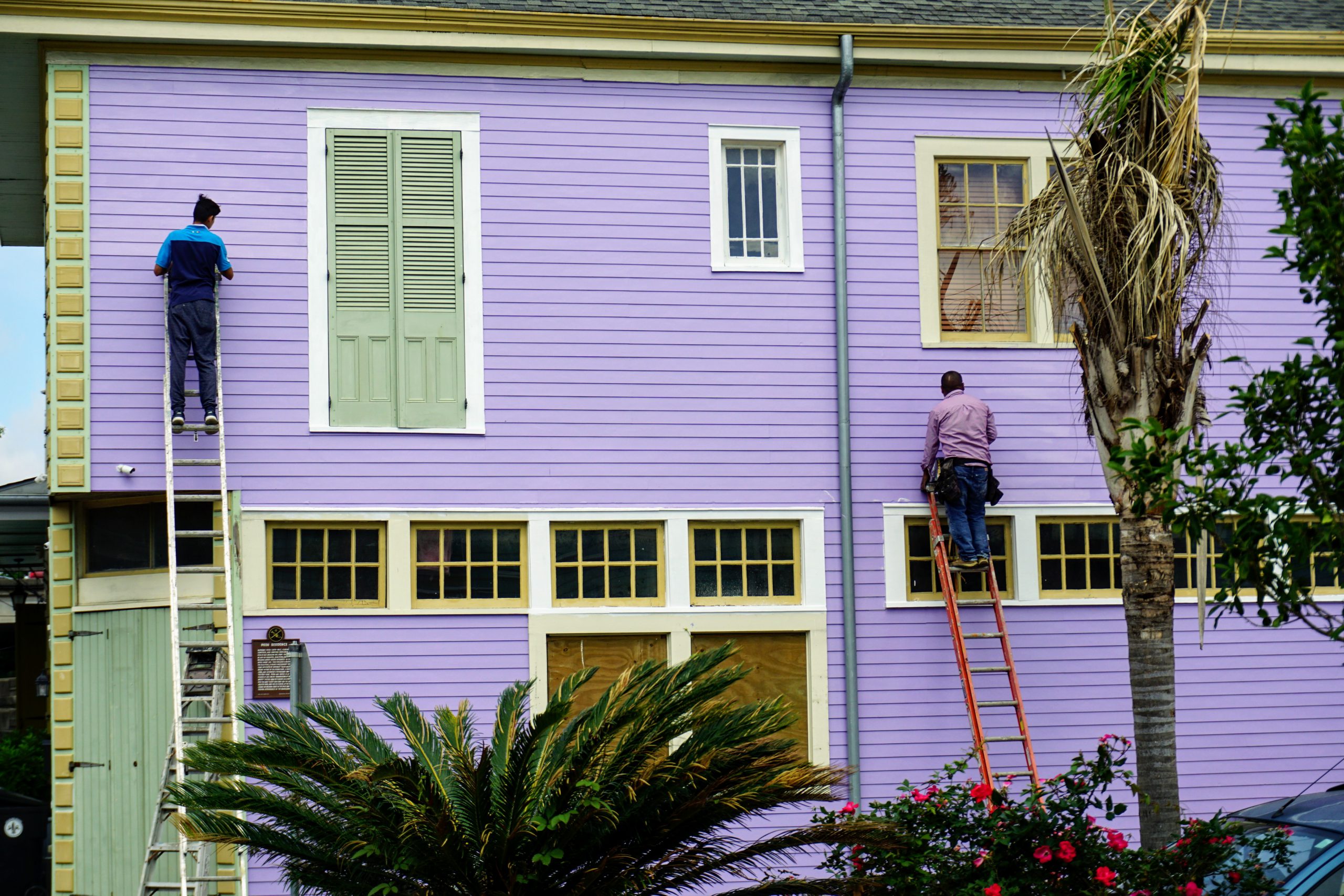We started our series on routine rental maintenance by discussing common plumbing problems in rental properties, and in particular how to prevent them. This time, as part two, we’re going to tackle routine maintenance where it comes to security, pest control, & exterior concerns. The third in our series covers electrical, fire safety, and HVAC systems.
Read Parts 1 & 3 of this Series:
Routine Rental Maintenance: Safety & Security
Installing and maintaining safety and security products protects both your tenants and your property. In many locations there are regulations regarding re-keying of locks at each turnover. Not to mention the fact that tenants who don’t feel safe won’t stick around long-term. With property crime becoming more of an issue in some markets, it’s increasingly important for properties to be secure and have deterrents such as motion lights and cameras.
-
Doors: Make sure the doors to all units are solid on their hinges, close securely, and have functional locking hardware. We recommend having deadbolts on all doors, as they provide far more security than simple locking latches.
-
Re-keying: Check with local authorities to make sure you know the laws regarding re-keying of locks between tenants. Whether required or not, we recommend changing keying at every turnover to protect your tenants and avoid the potential liability that could arise if a previous occupant re-enters a unit. We’ve written a whole article on re-keying here.
-
Windows: Make sure all windows latch securely. We recommend providing adjustable stops or wood dowels for all sliding windows and patio doors. Cut a section of either material to the length of the track when the window is closed (or slightly shorter, so that the window can be cracked open for ventilation). Laying this rod horizontally in the track makes it virtually impossible for an intruder to open the window.
-
Lights and Cameras: We have experienced an increase in property crimes at our rentals here in Seattle, and we believe other landlords in urban areas have seen the same. We’ve written an article on using cameras, lights, and alarms to increase the security of your property.
Security Tip:
We have converted most units we manage to coded keyless locks. Here is our favorite deadbolt and lever entry unit, or read our article on changing locks and choosing the best products.
 Also Read: Apartment Security Systems – How They Work, What to Look For, and More
Also Read: Apartment Security Systems – How They Work, What to Look For, and More
Routine Rental Maintenance: Pest Control
Rental property pest control is complex and often requires the expertise of a professional in order to handle the problem effectively. If you decide to deal with these problems on your own, however, we recommend the following measures:
-
Eliminate entry points: Openings can be physically covered (sometimes materials that cannot be chewed will be necessary) or sealed – we like stuffing wire screen into smaller openings, then filling the space with building spray foam. Where animals are burrowing-in it is effective to fill the access point with loose pebbles. Any efforts to dig through will fail because the material will shift and prevent progress. Trees or shrubs adjacent to buildings often help pests gain access. Trimming any limbs or growth away from the building can eliminate this option for an intruder.
-
Exterior Bait: Place poison outside the building in child and animal-safe containers. This may be controversial, however we’ve rarely had luck dissuading pests without reduction of their population around the property. For rodents we’ve found bait boxes work well. For ants and insects there are various bait traps (we like gel products) available at local hardware stores.
-
Interior Bait: Place poison inside the building. For rodents we do not recommend this as you can end up with stinky dead critters in your building. For ants and insects, however, there are products that can be effective, such as sprays that can be applied at baseboards. Some of the ant or insect traps mentioned above are also safe to use indoors – check packaging carefully to make sure!
-
Bed bugs and fleas: Both can thoroughly invade living spaces, especially where there are soft surfaces such as carpet, bedding, or furniture. In our experience it is often necessary to hire a professional to deal with infestations. There are, however, measures a landlord or tenant can take. Very high temperature will kill either pest, and heaters are available to treat belongings, large pieces of furniture, or full rooms. Fun Fact: Dogs are the state of the art in bed bug detection!
 Also Read: Marble: Flat Fee Remote Property Management
Also Read: Marble: Flat Fee Remote Property Management
Routine Rental Maintenance: Roof & Gutters
Water intrusion is what comes most quickly to mind when we consider preventative maintenance at the exterior of rental properties. Firstly, here are some leak prevention and routine rental maintenance measures we suggest, along with a few tips on general steps to take to keep up the exterior of your rental buildings.
-
Roof: If you can safely see the roof we recommend keeping an eye on moss growth, loose flashing, and broken shingles.
-
Have your roof professionally inspected. A pitched composite shingle roof may only need to be checked every 3-5 years, however with flatter roofs we recommend inspection every 2-3 years. We suggest hiring a professional to take care of flat roof maintenance, as they’ll be able to spot separating seams and other signs of wear or failure.
-
Inspect more frequently as the roof nears the end of its expected life in hopes of heading off failure and water damage.
-
De-moss your roof every 1-3 years, depending on the climate you live in. As long as moss doesn’t get established, it is usually possible to remove any growth with a stiff broom. We fear chemical anti-moss & algae products may be polluting or dangerous so do not recommend them. We haven’t researched the topic thoroughly, however, so there may be safe products.
-
Gutters: Make sure to have gutters and downspouts cleaned every fall to avoid backups that can cause flooding. Gutters full of water often pull off the building, and are expensive to fix. There are handy tools available if you’d like to do this yourself, however we strongly suggest having a professional do the work if long ladders are required. Here’s a versatile and sturdy Little Giant ladder we like, as well as a good safety harness and anchor point.
 Also Read: Reporting and Accounting Tools: Best Accounting Software for Landlords
Also Read: Reporting and Accounting Tools: Best Accounting Software for Landlords
Routine Rental Maintenance: Chimney, Sealants, & Paint
-
Chimney Inspection: It is important to monitor the condition of any chimney in order to avoid leaking. Old masonry chimneys will also need to have mortar replaced eventually. Not only does failing mortar present the risk of leaks, but bricks can come loose and fall if the chimney gets to the point where all the pieces aren’t stuck together anymore.
-
Window and Door Sealant: Exterior trim is often sealed to siding with caulking. UV rays and expansion/contraction over time will degrade this seal, leading it to fail eventually. Inspect caulking joints yearly and renew any that is cracked or separated from the surfaces they are sealing. Over the years we’ve found that SilkaFlex caulking stands up best.
-
Paint: It is best to replace paint before it starts bubbling and flaking. Repainting is far more expensive when the old paint has failed because it will need to be stripped-off and any exposed wood will need to be primed before top-coats are applied.
Routine Exterior Maintenance Tips:
1. Flashing at chimneys is a common water intrusion point. Make sure the upper edge of your flashing is bent and bedded into a joint in the mortar. Do not rely on sealant between the chimney and flashing as it will degrade and separate over time.
2. Make sure to paint new caulking in good weather, as this prolongs the life of the product and keeps you from having to repeat the process often.
3. Chalky fading is a sign that paint is getting to the end of its’ life, as is the appearance of bubbles or cracks. Window sills and surfaces where water sits will show wear first.
 Also Read: How To Screen Tenants in 7 Easy Steps
Also Read: How To Screen Tenants in 7 Easy Steps
Routine Rental Maintenance: Landlord Gurus Takeaway
This is the second in our three-part series on routine maintenance. Our first covered the weighty topics around plumbing, and our next will focus on electrical, fire prevention, and HVAC issues.
We hope we’ve given you some food for thought for thought when you’re creating a maintenance plan. Meanwhile, if you have questions or something to add please don’t hesitate to contact us!
Photo by Ricky Singh on Unsplash
Disclosure: Some of the links in this post are affiliate links and Landlord Gurus may earn a commission. Our mission remains to provide valuable resources and information that helps landlords manage their rental properties efficiently and profitably. We link to these companies and their products because of their quality, not because of the commission.
Tagged landlord advice, property management, rental maintenance checklist, rental property maintenance, routine rental maintenance
![]() Also Read: Apartment Security Systems – How They Work, What to Look For, and More
Also Read: Apartment Security Systems – How They Work, What to Look For, and More![]() Also Read: Marble: Flat Fee Remote Property Management
Also Read: Marble: Flat Fee Remote Property Management![]() Also Read: Reporting and Accounting Tools: Best Accounting Software for Landlords
Also Read: Reporting and Accounting Tools: Best Accounting Software for Landlords![]() Also Read: How To Screen Tenants in 7 Easy Steps
Also Read: How To Screen Tenants in 7 Easy Steps



